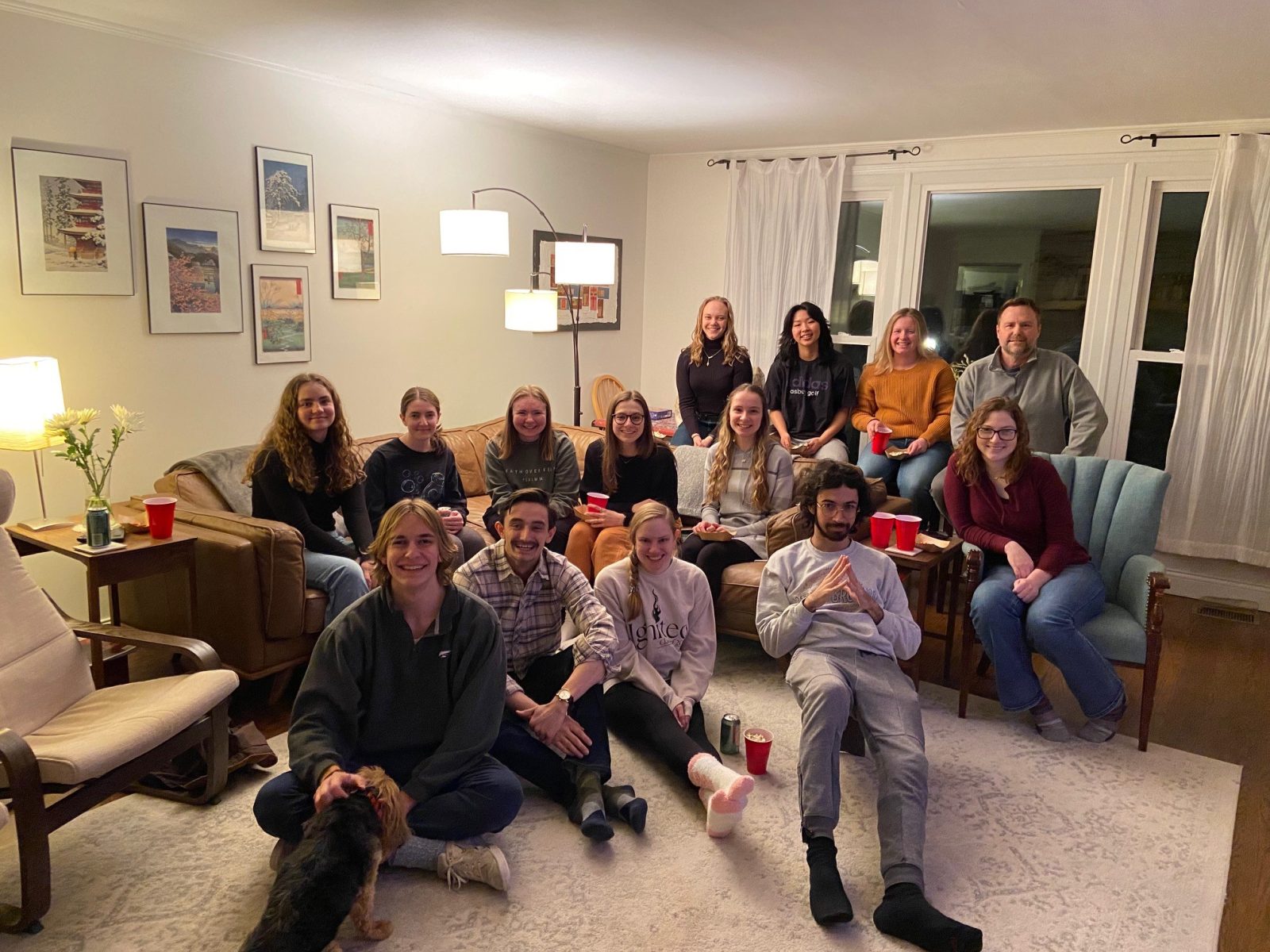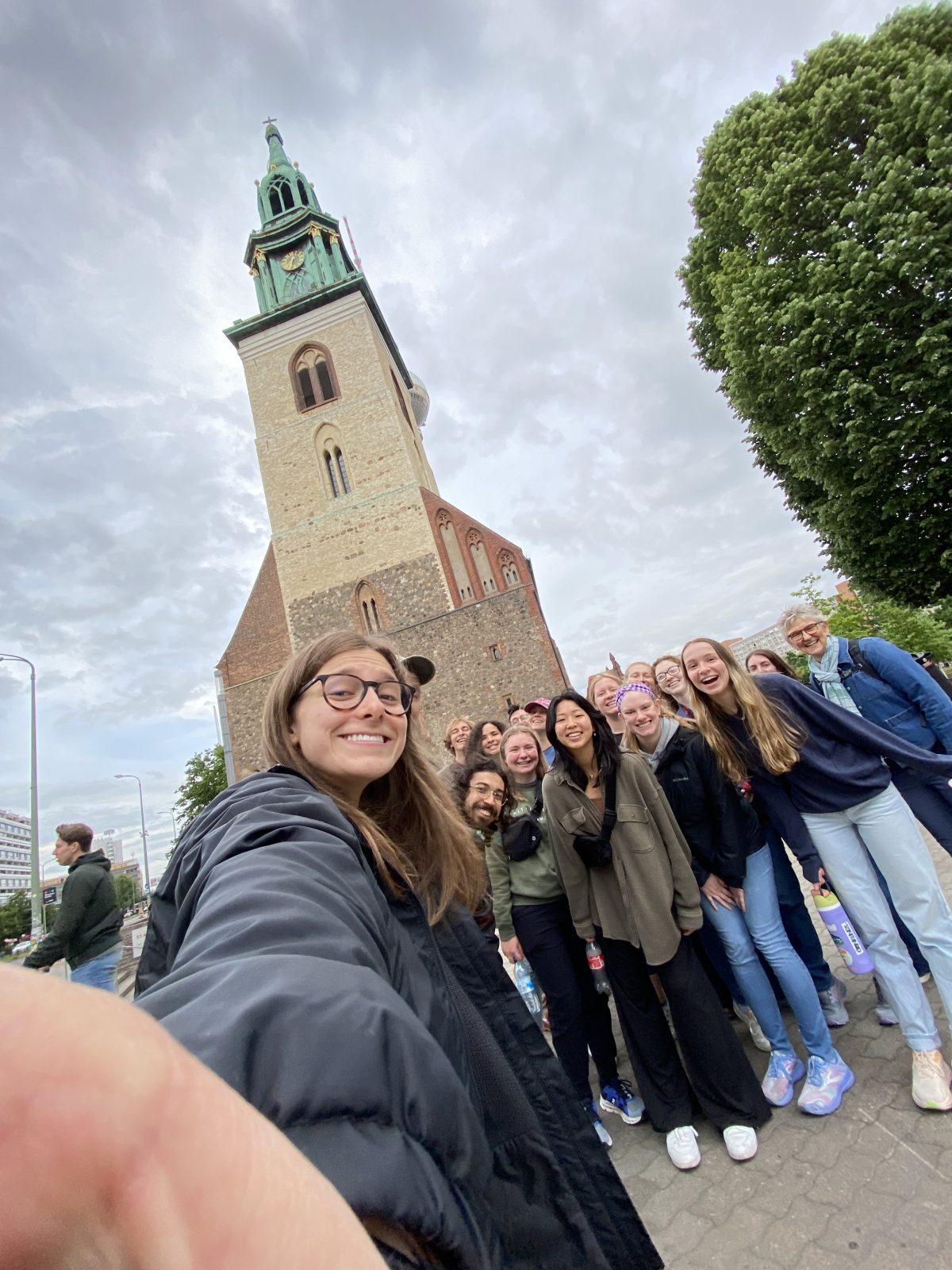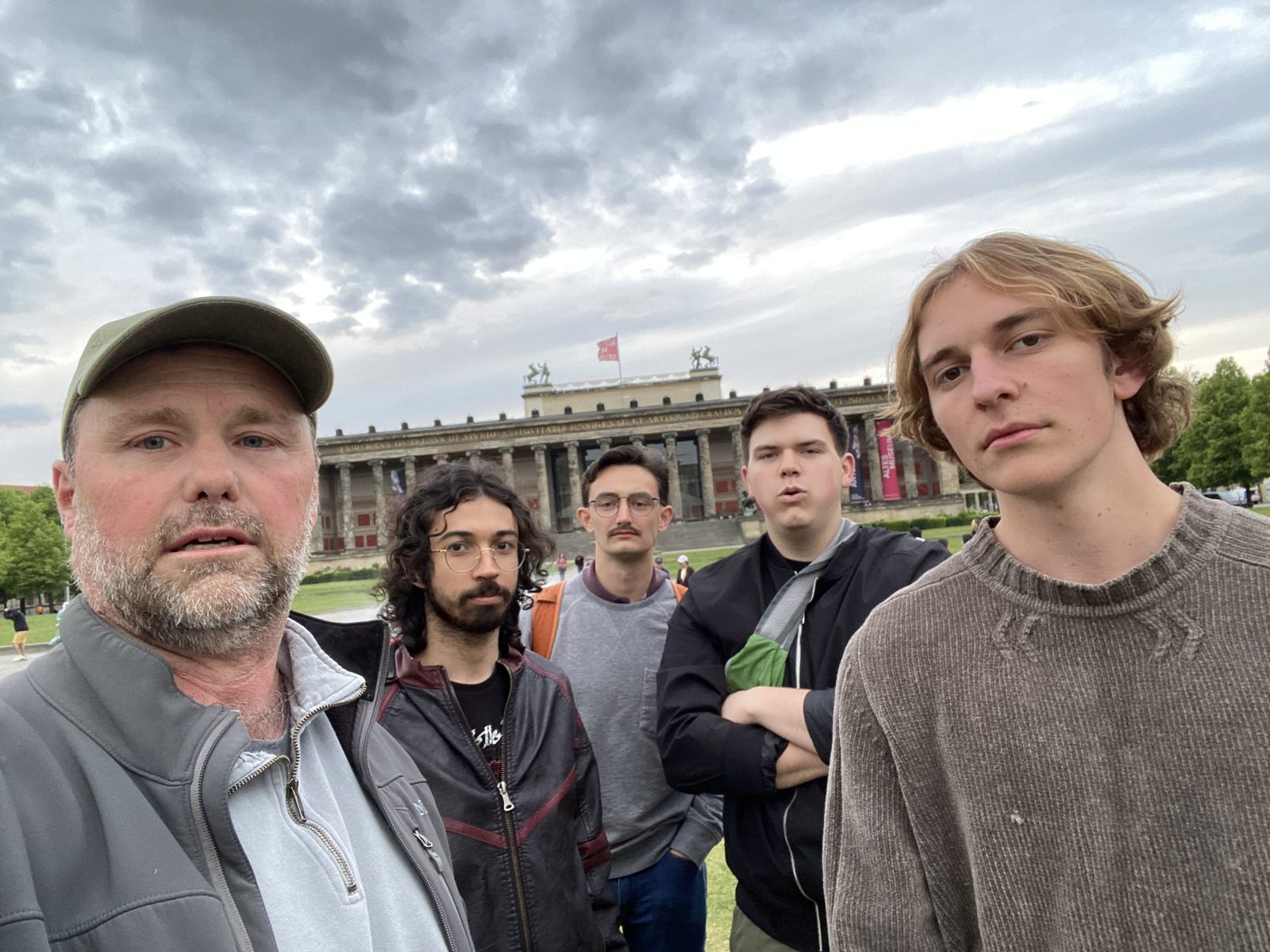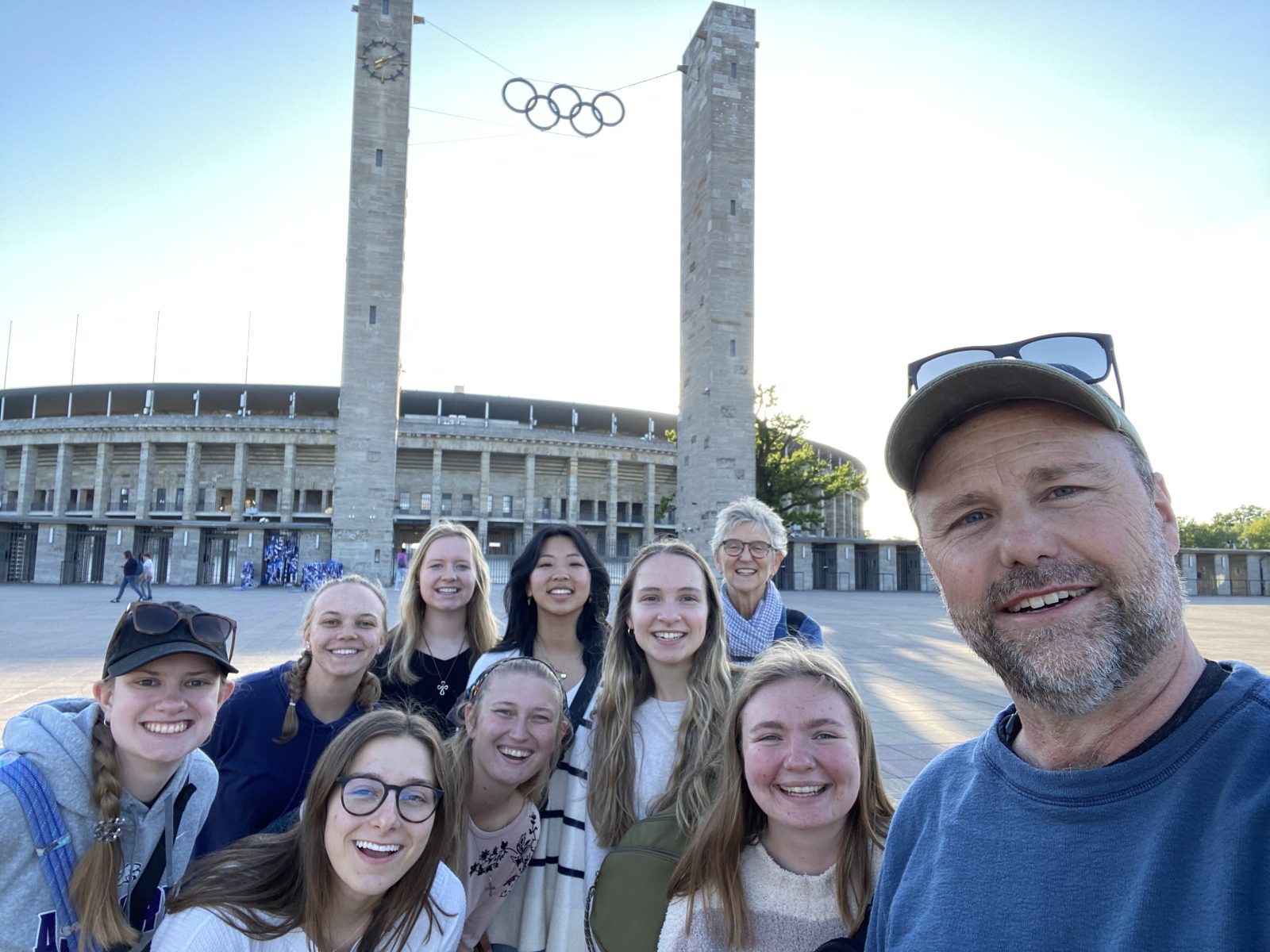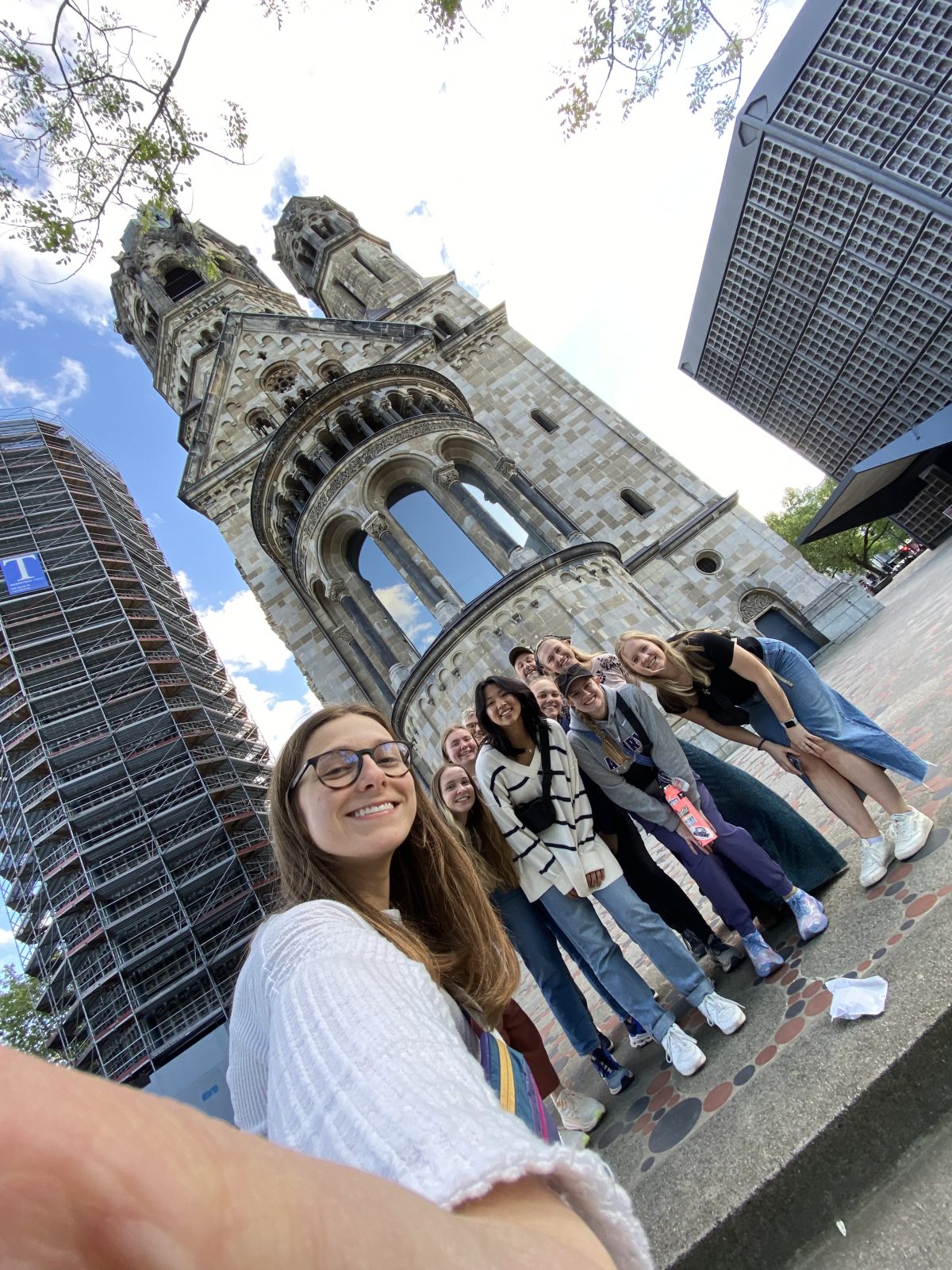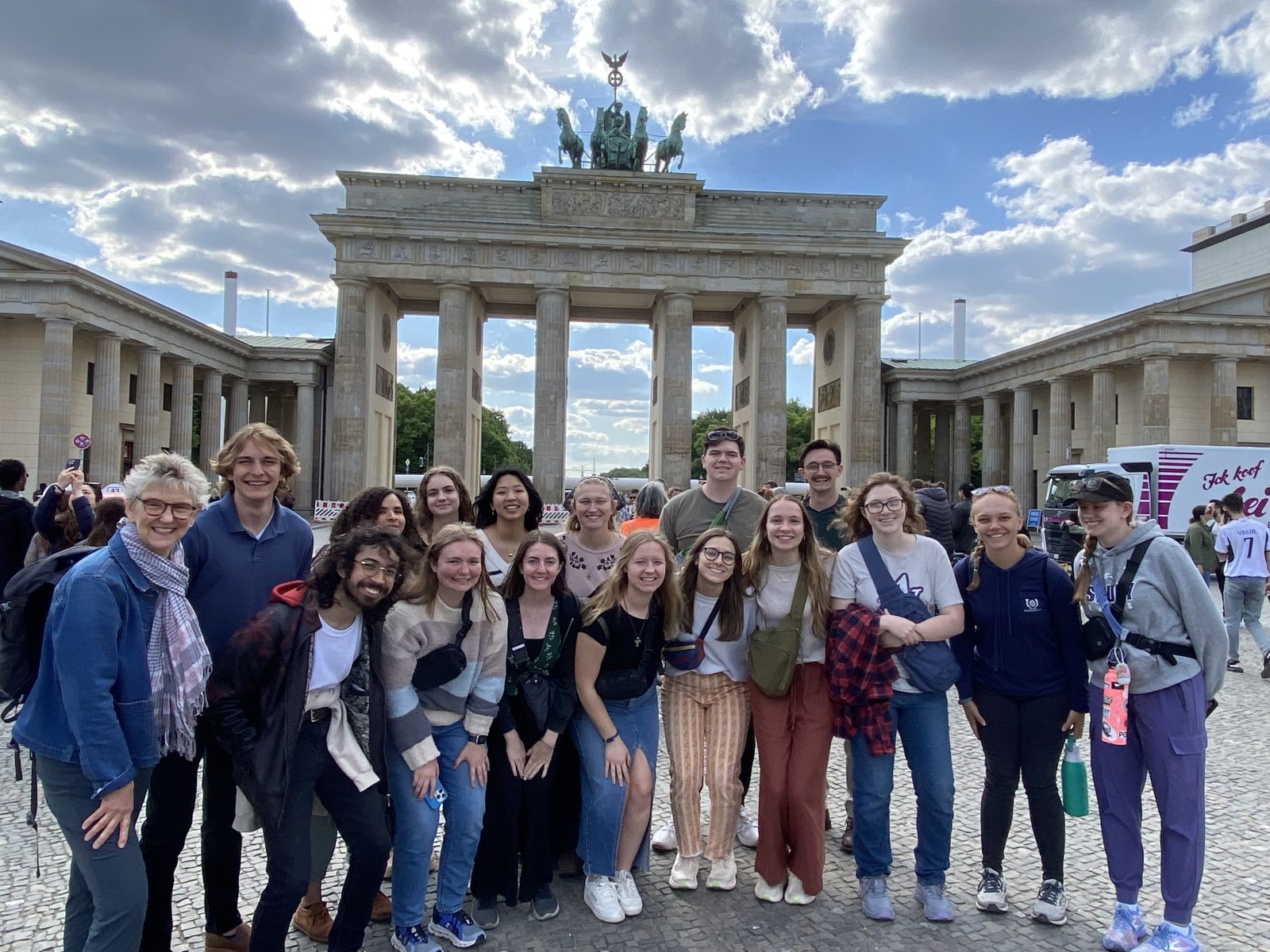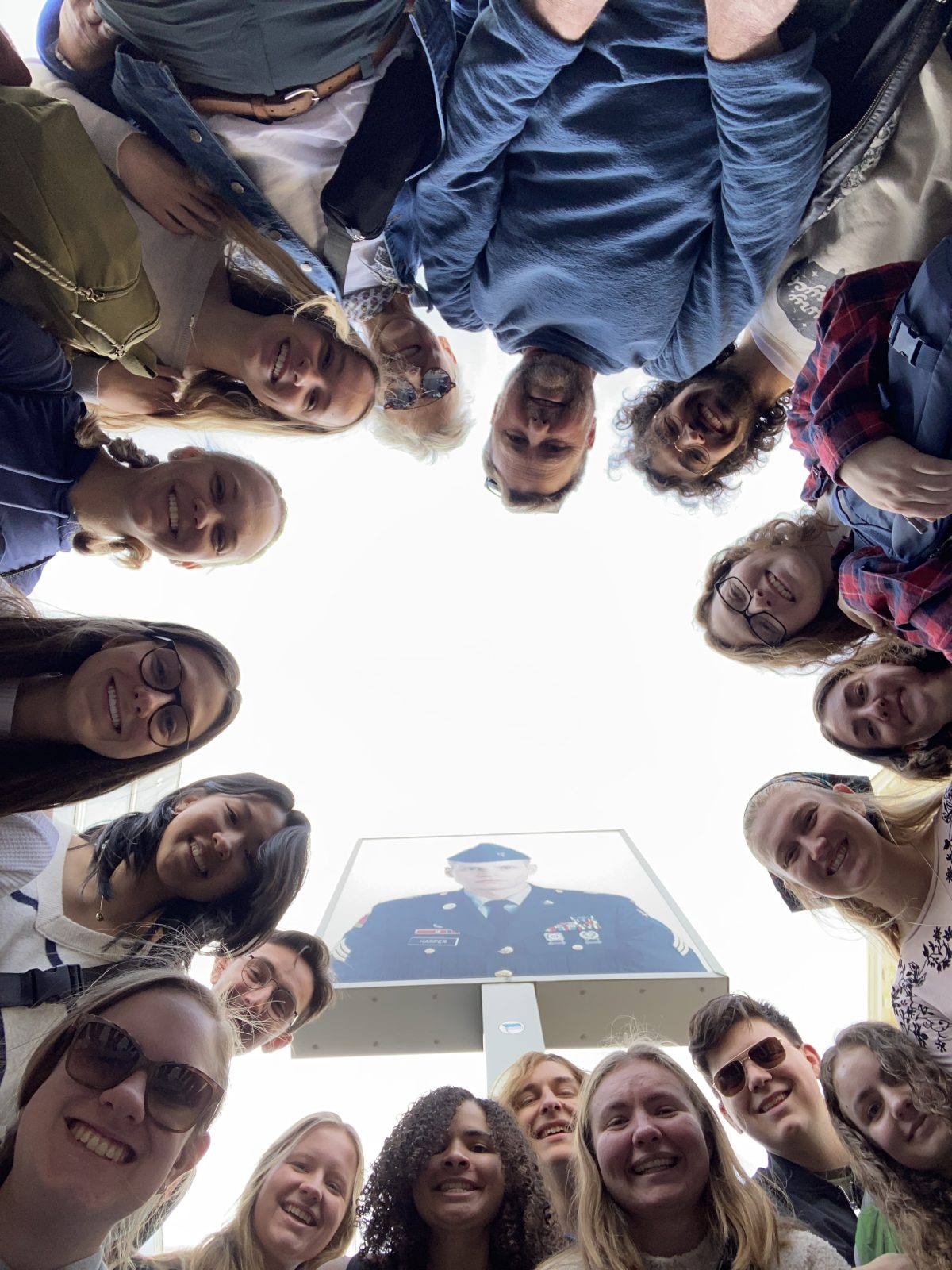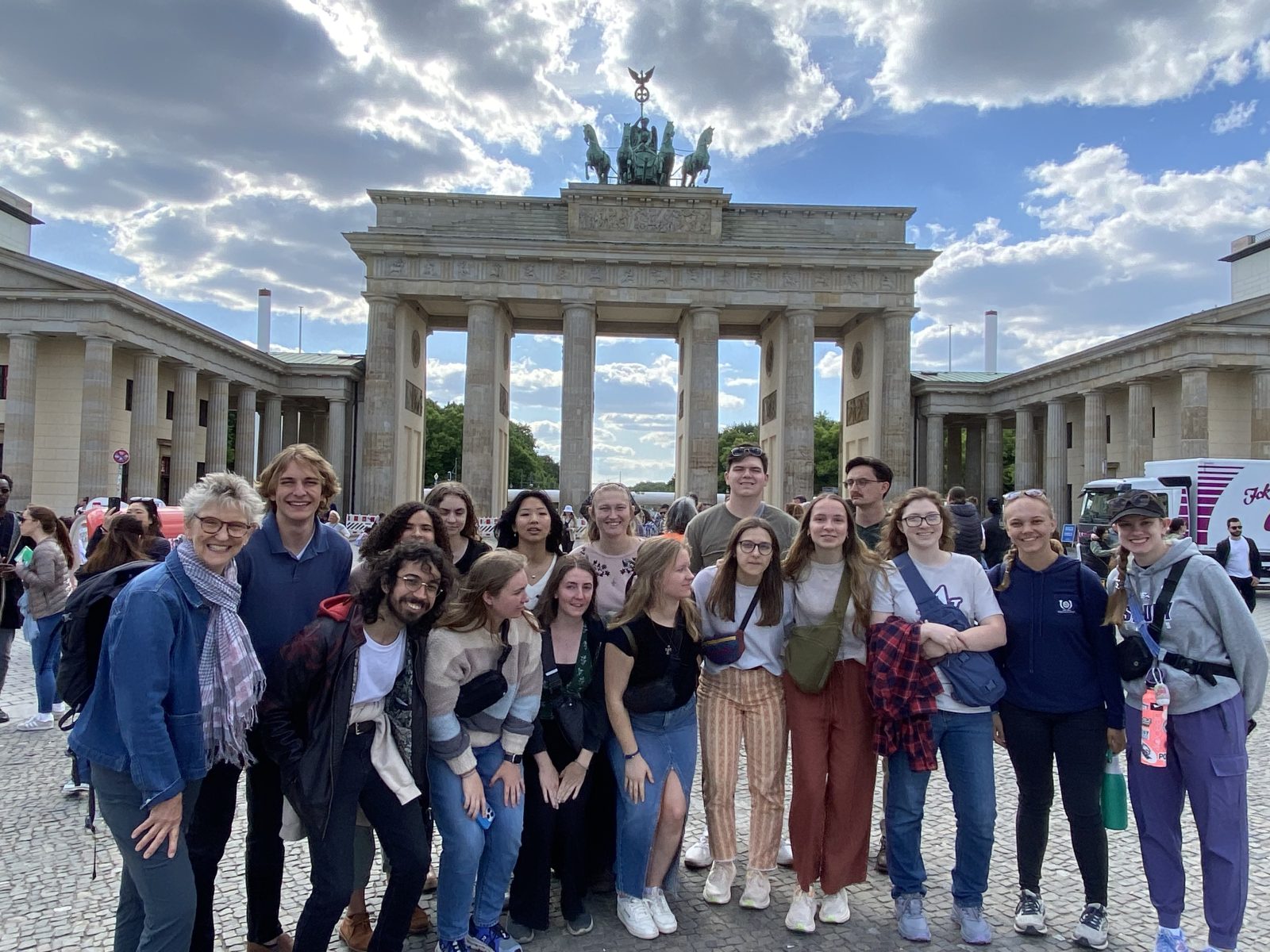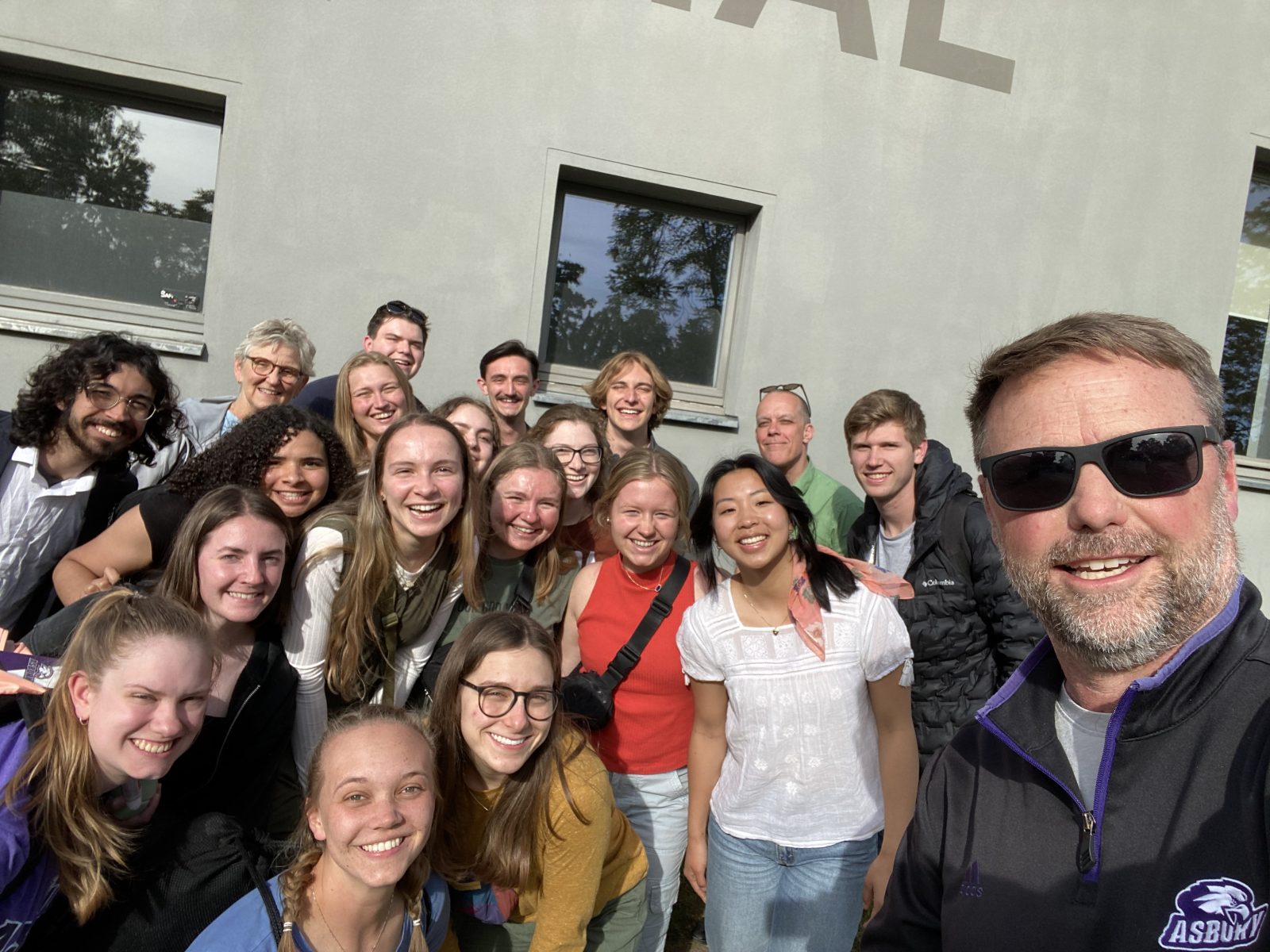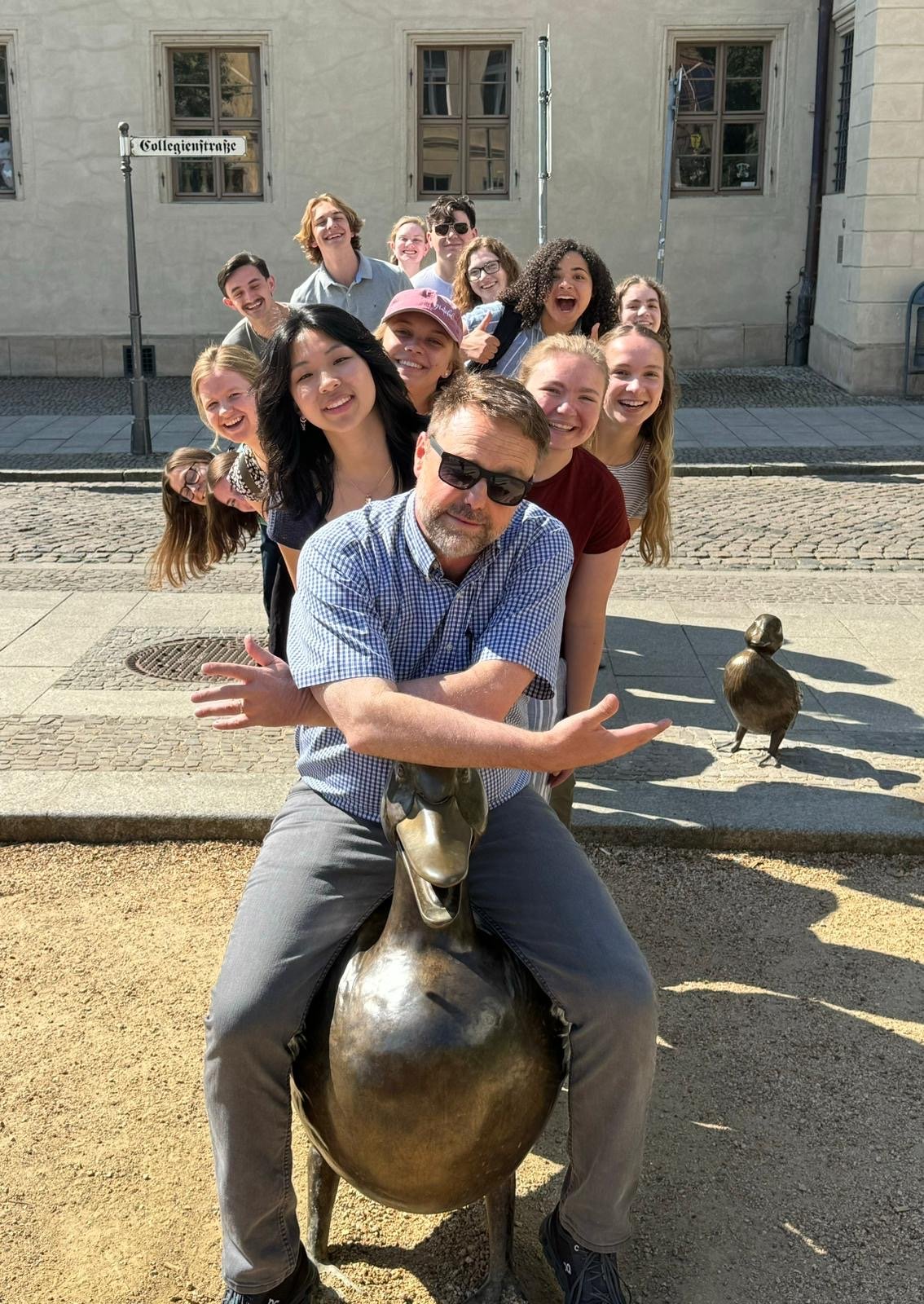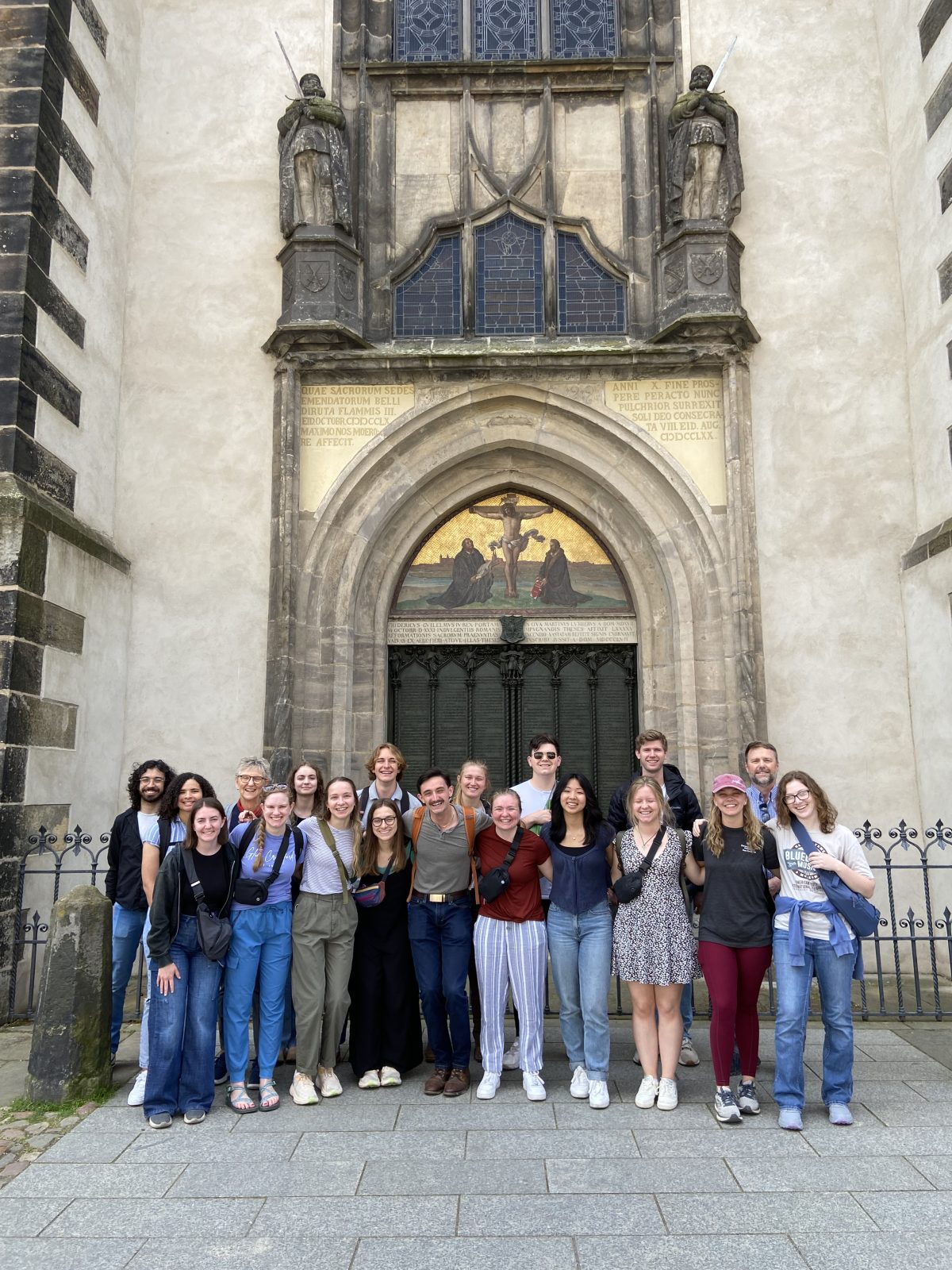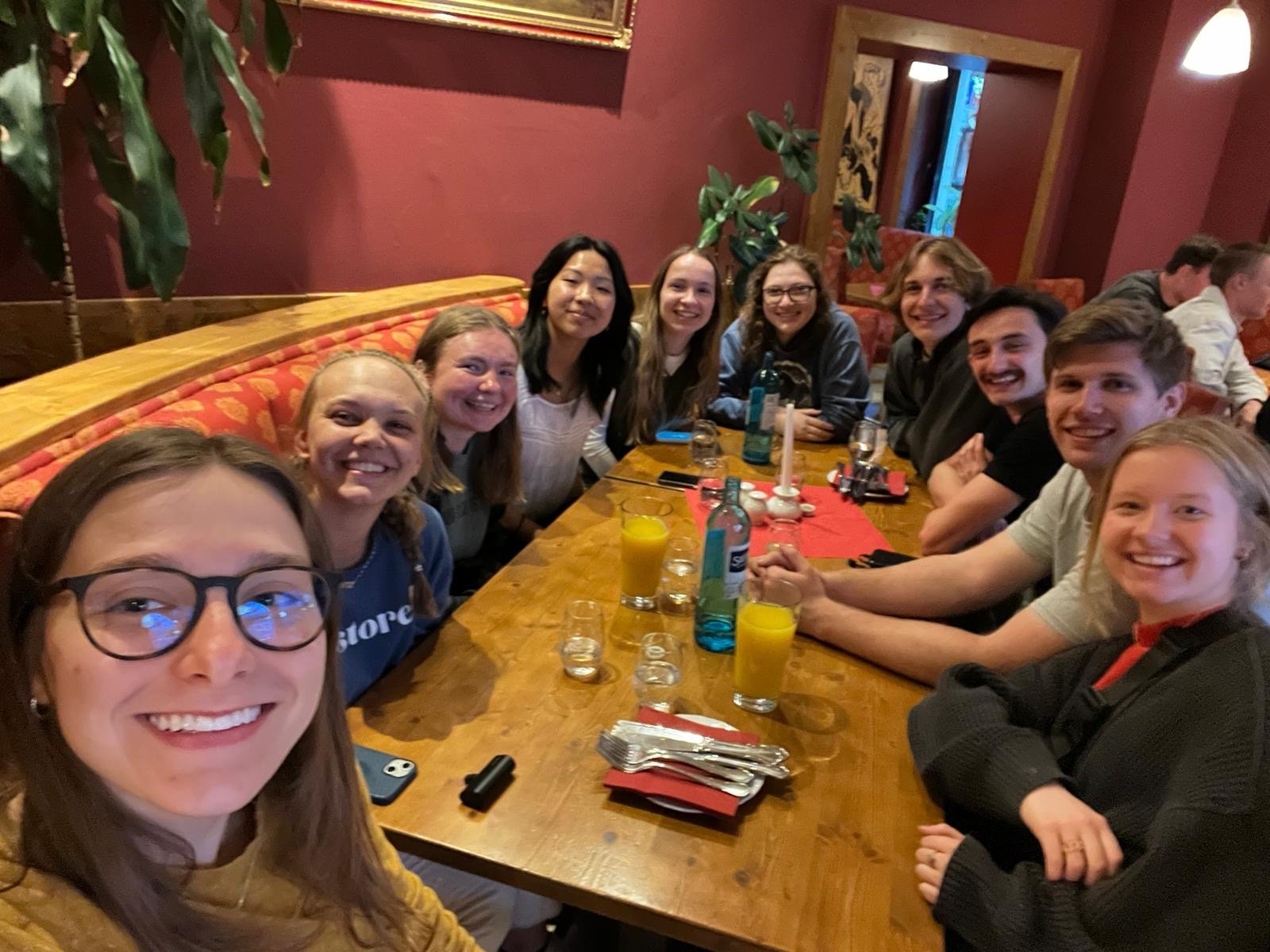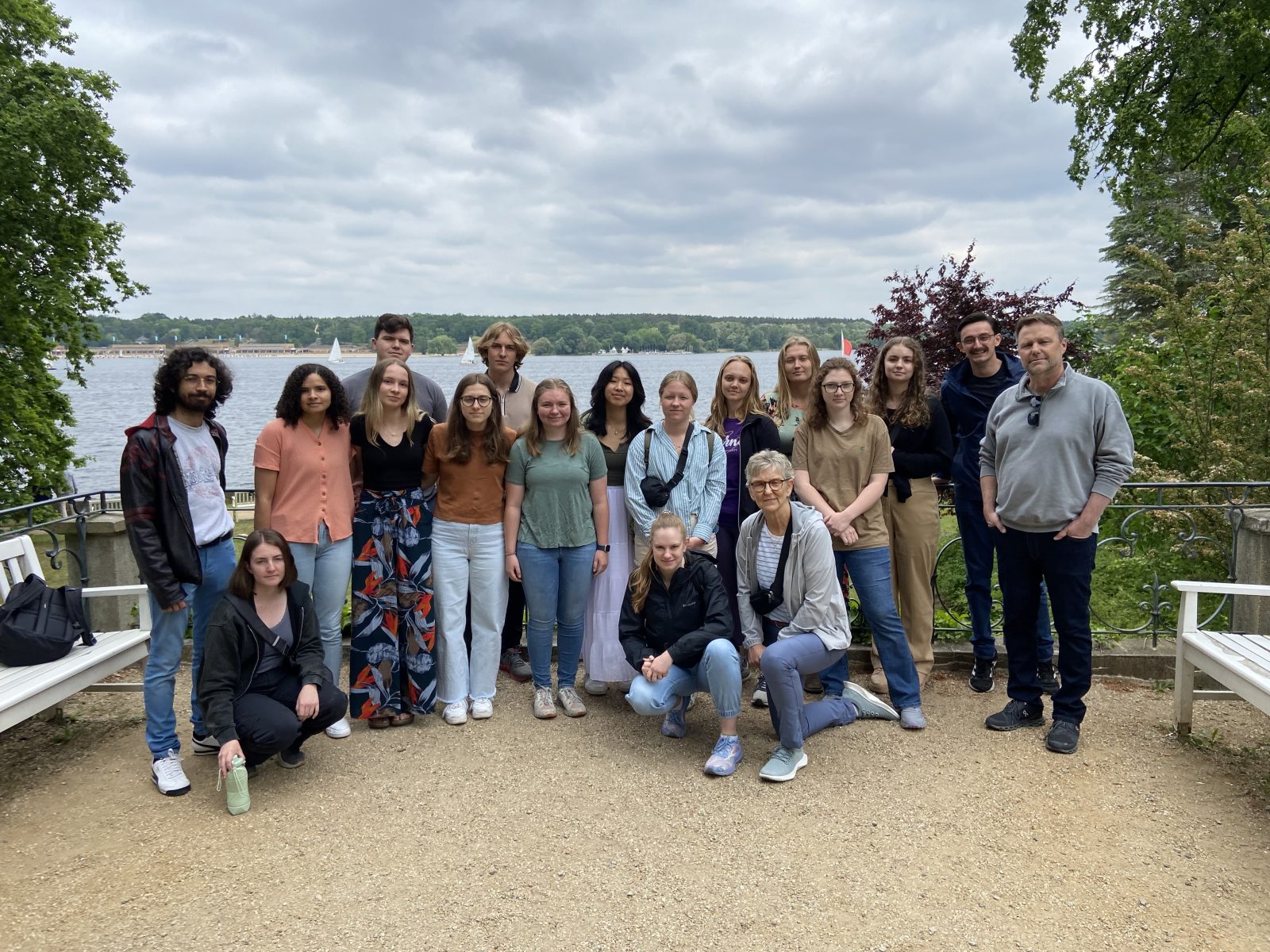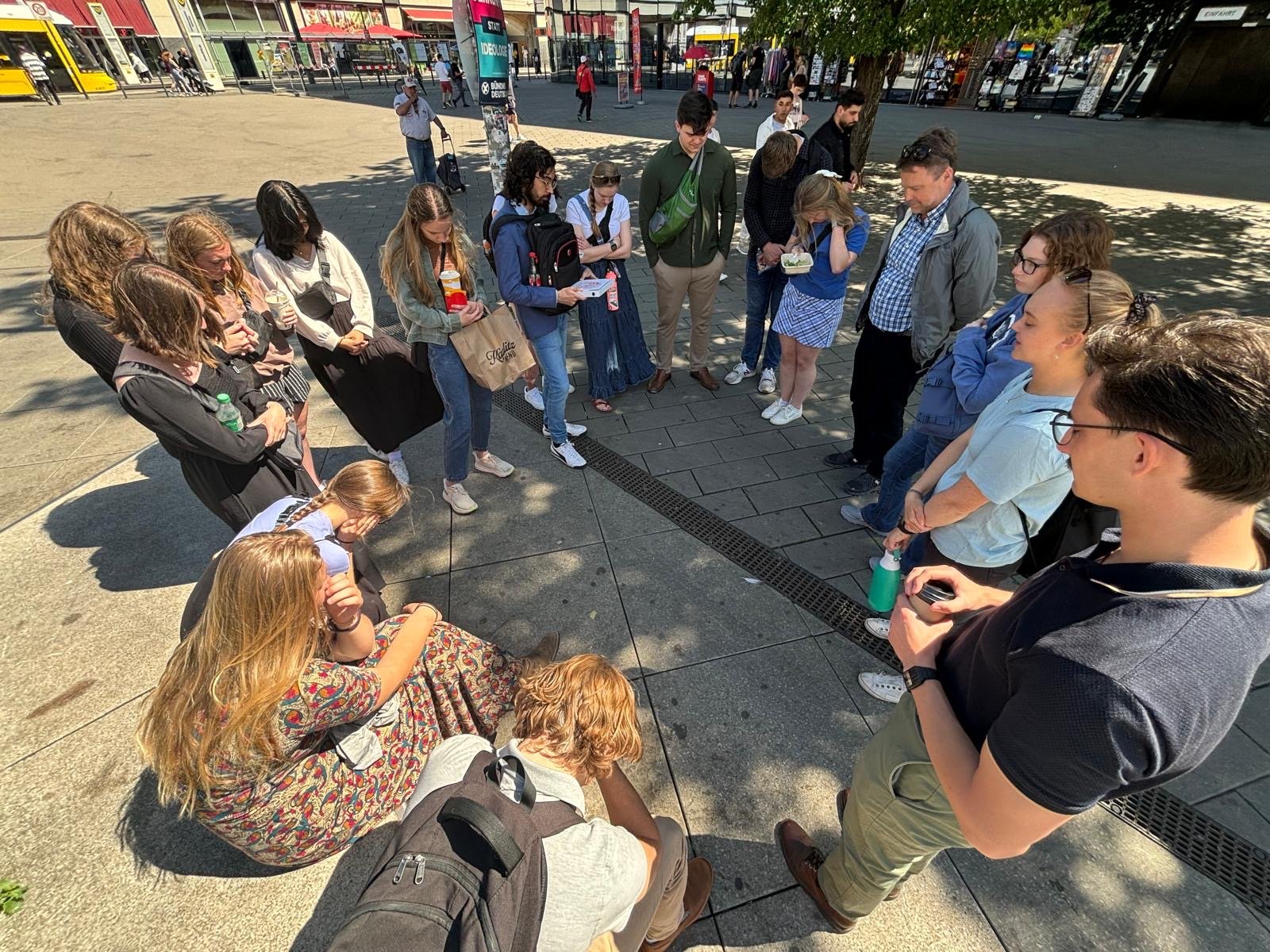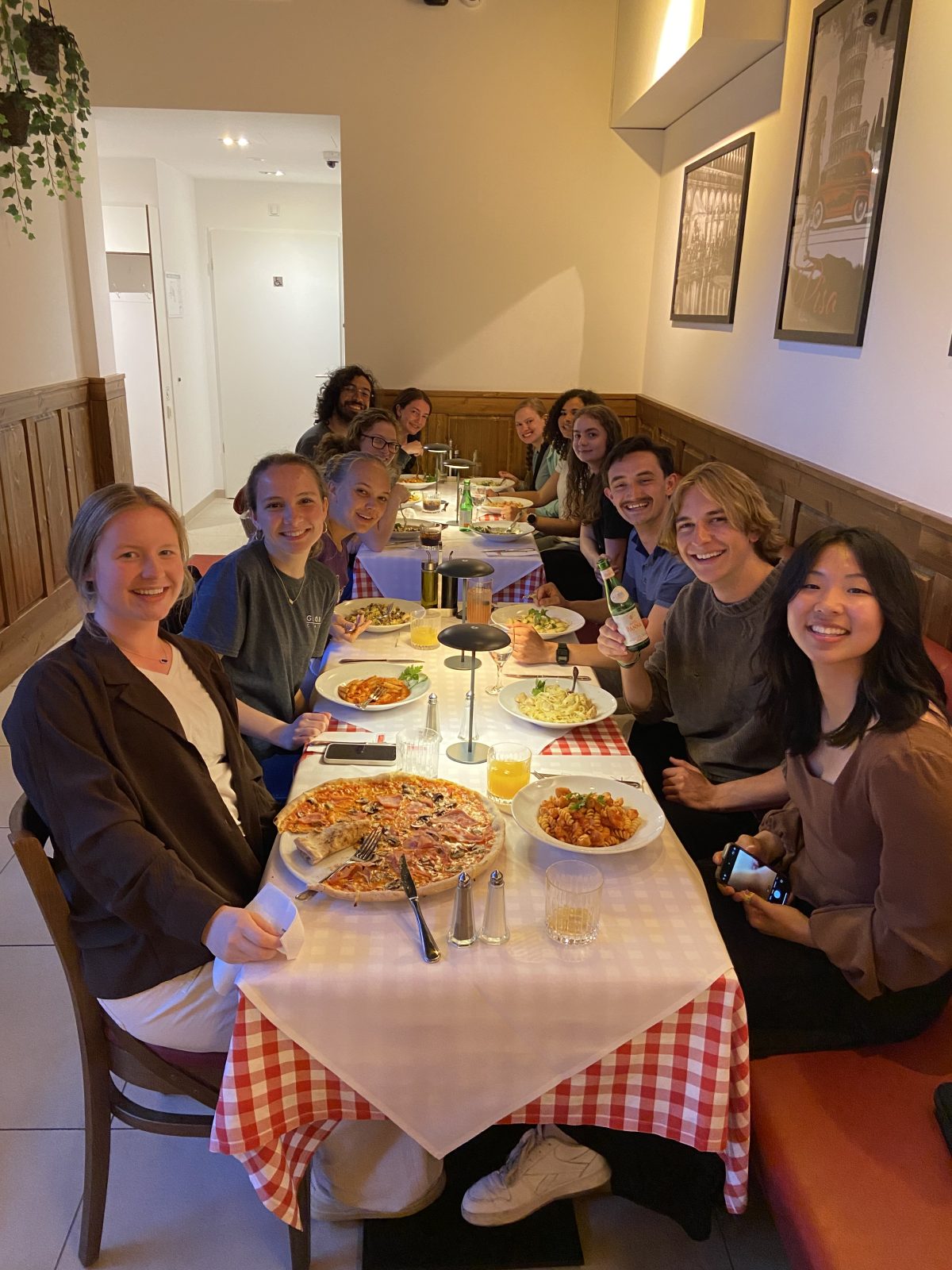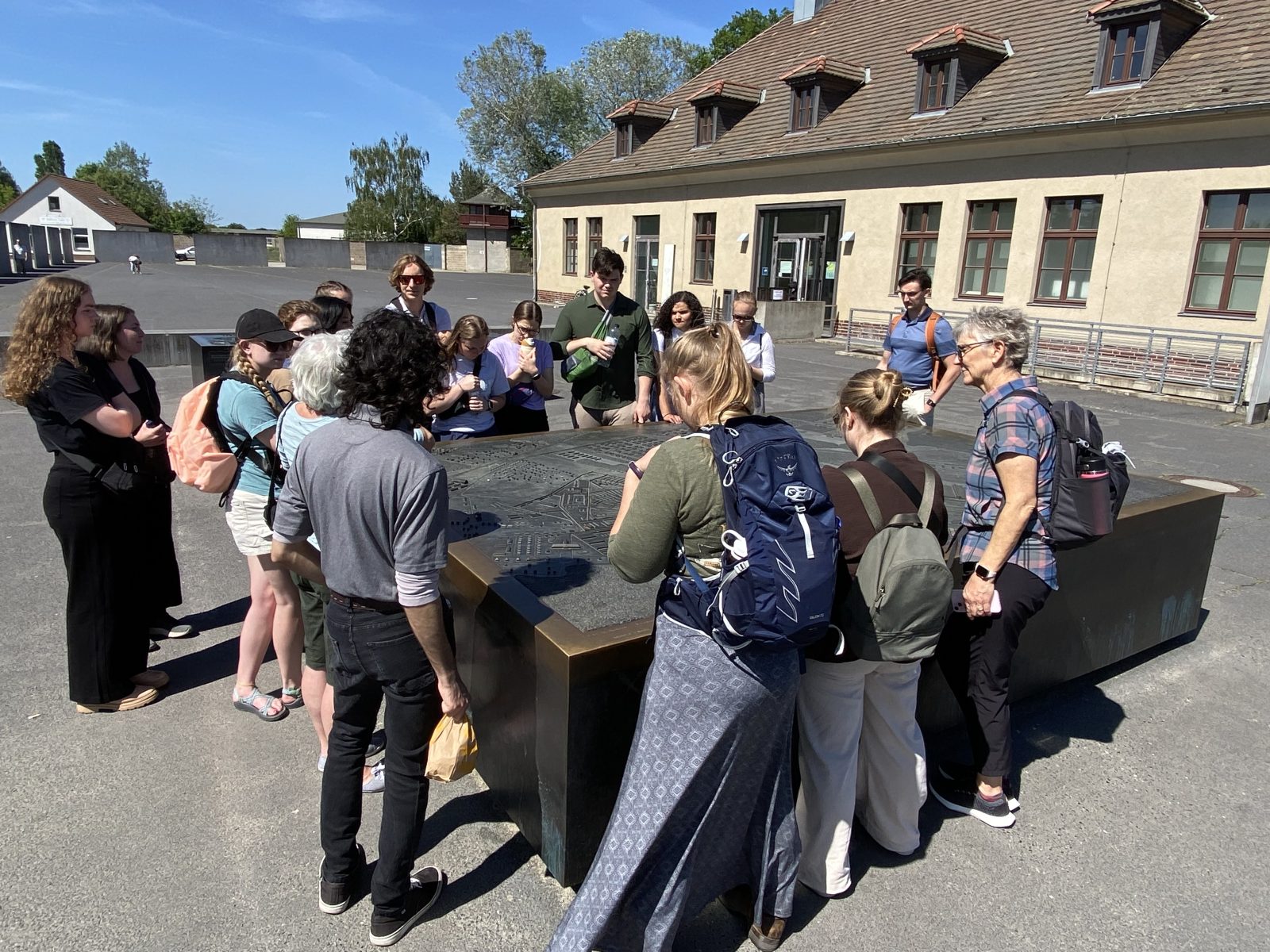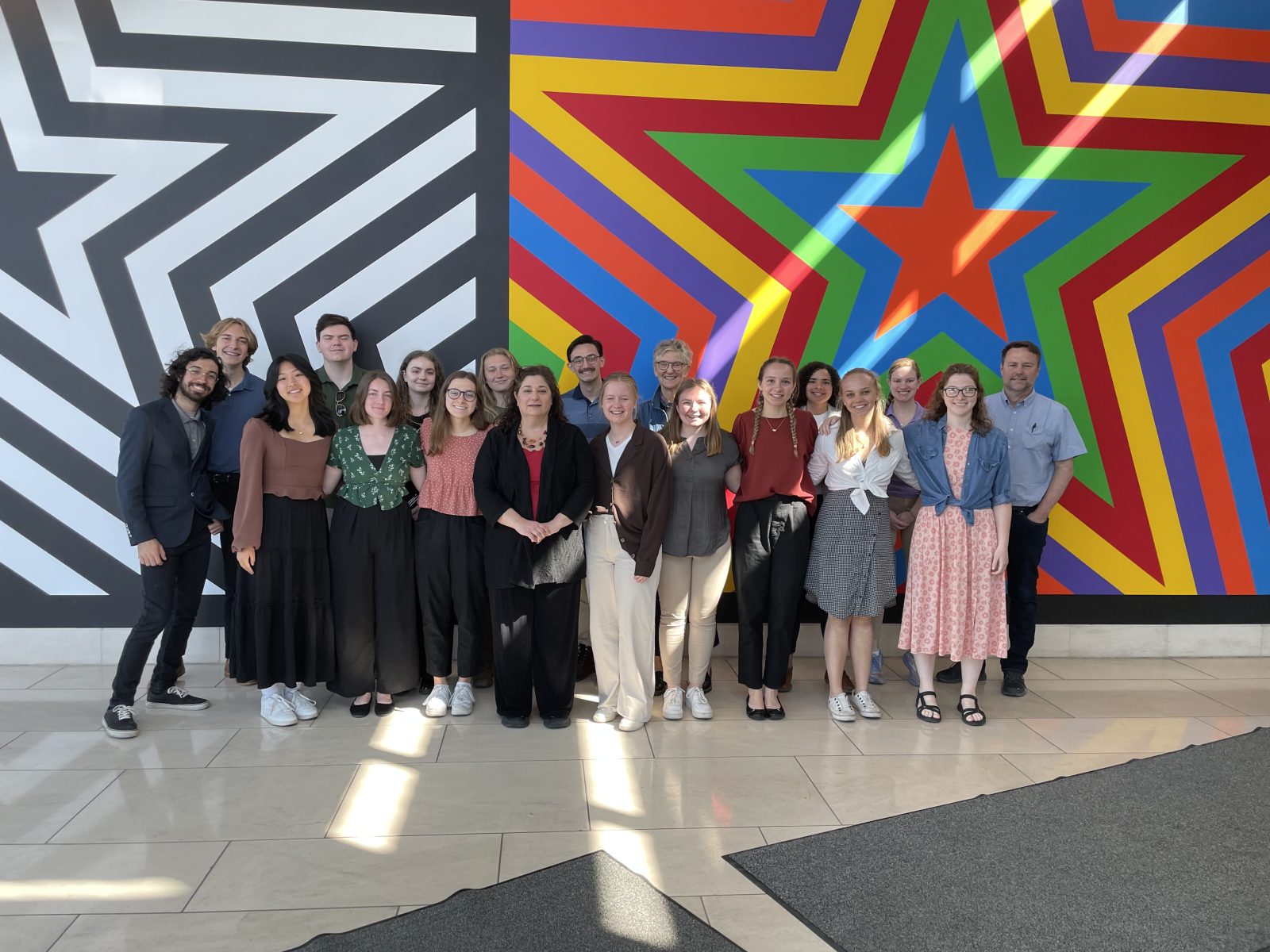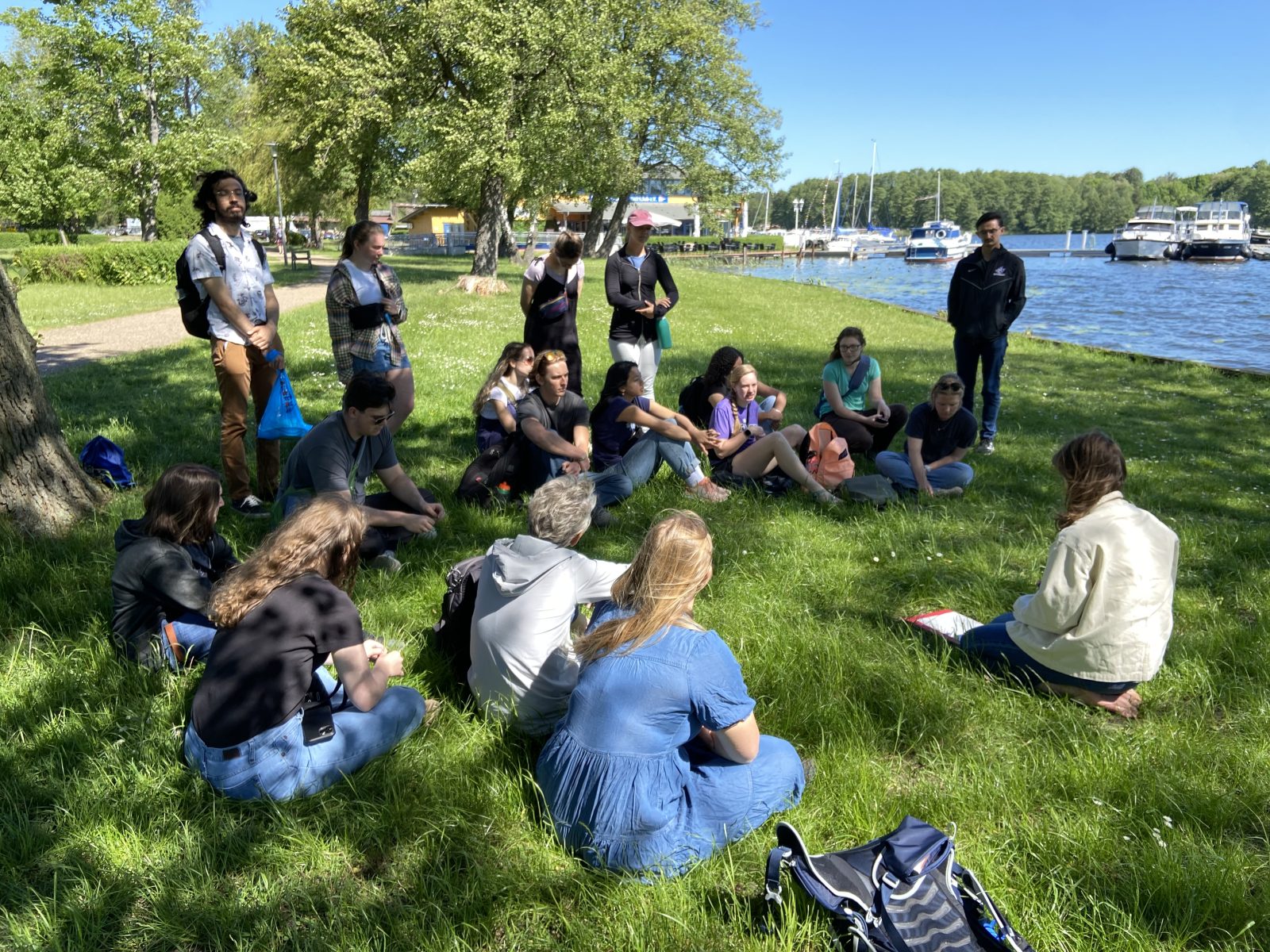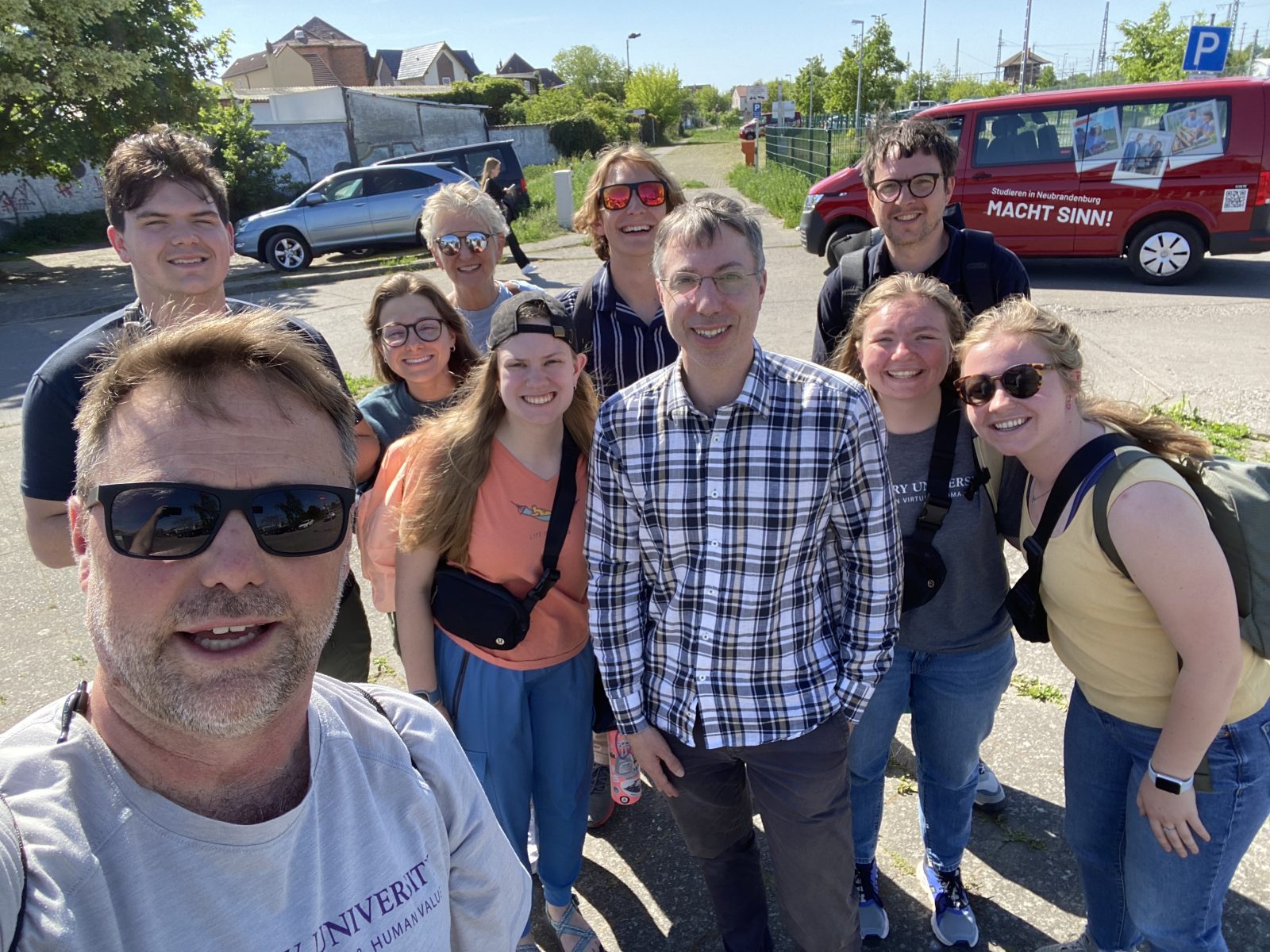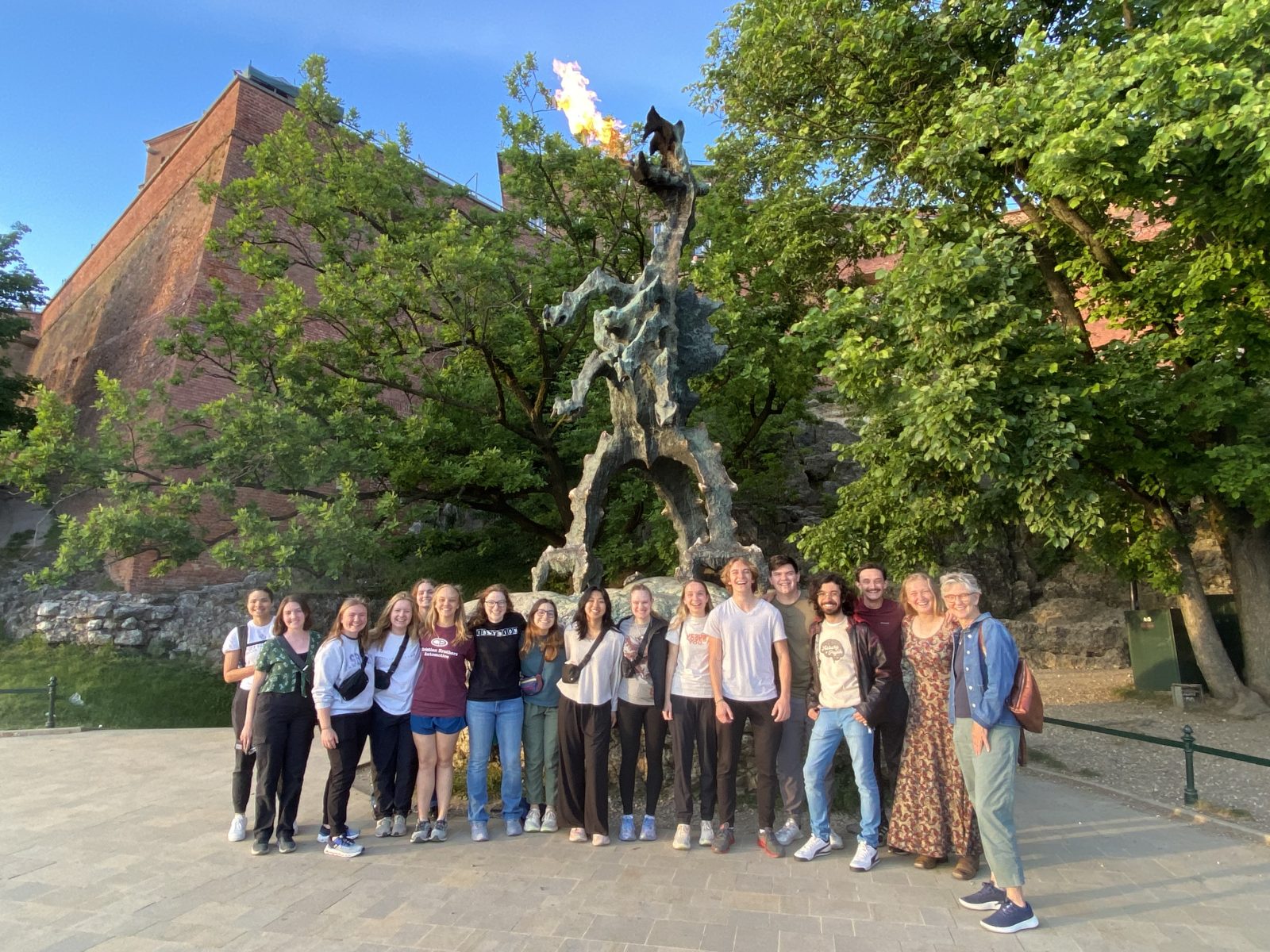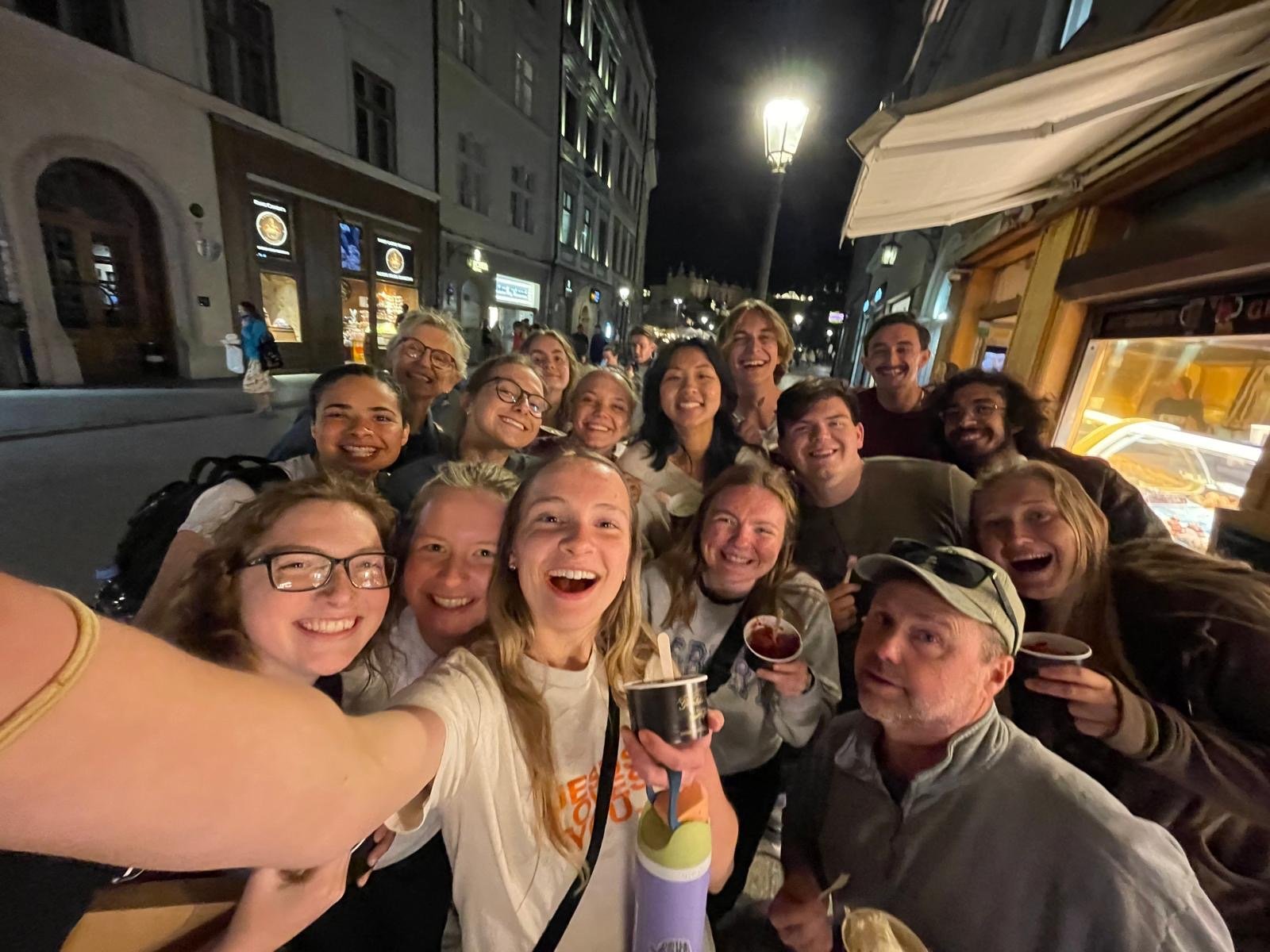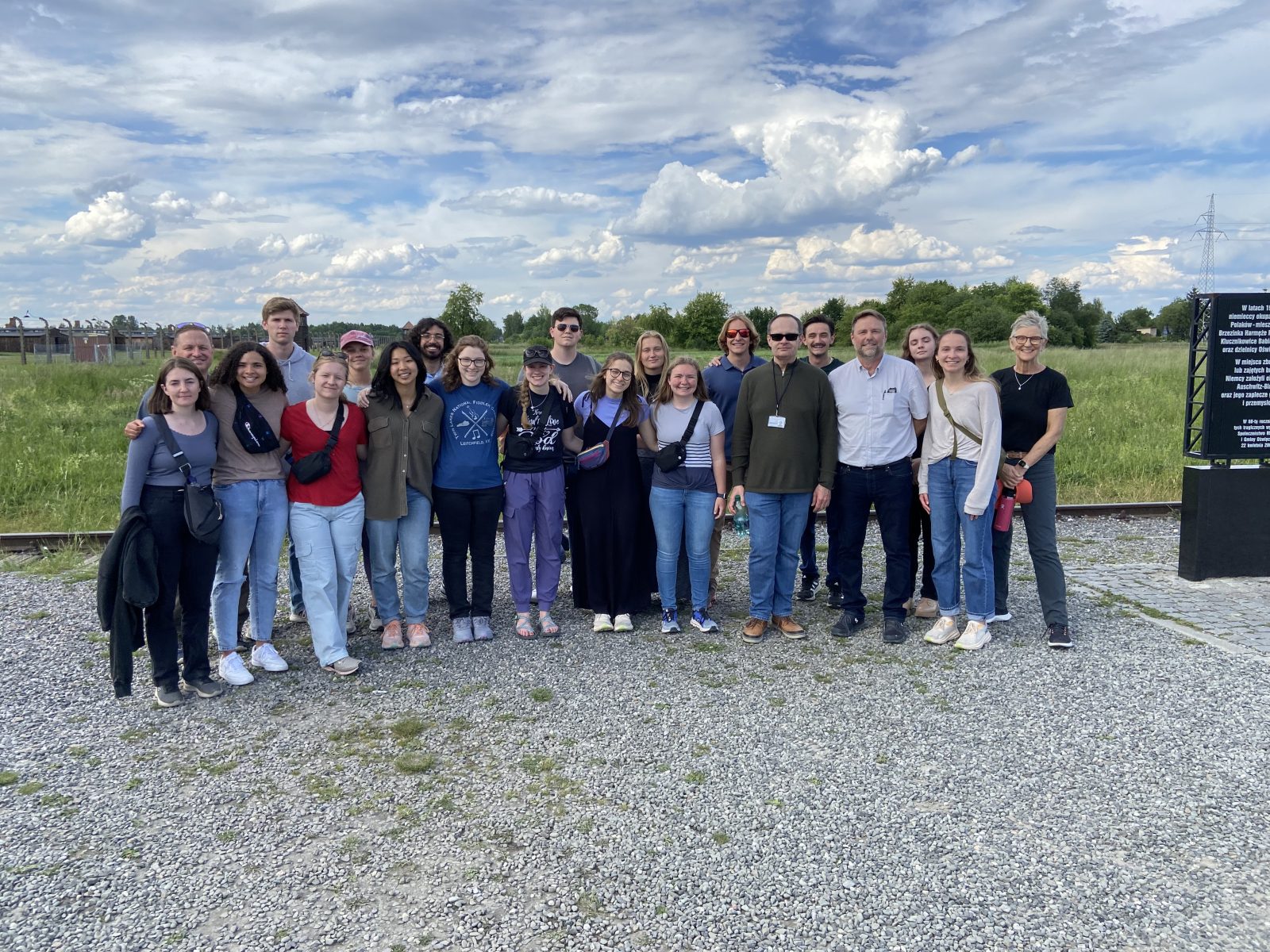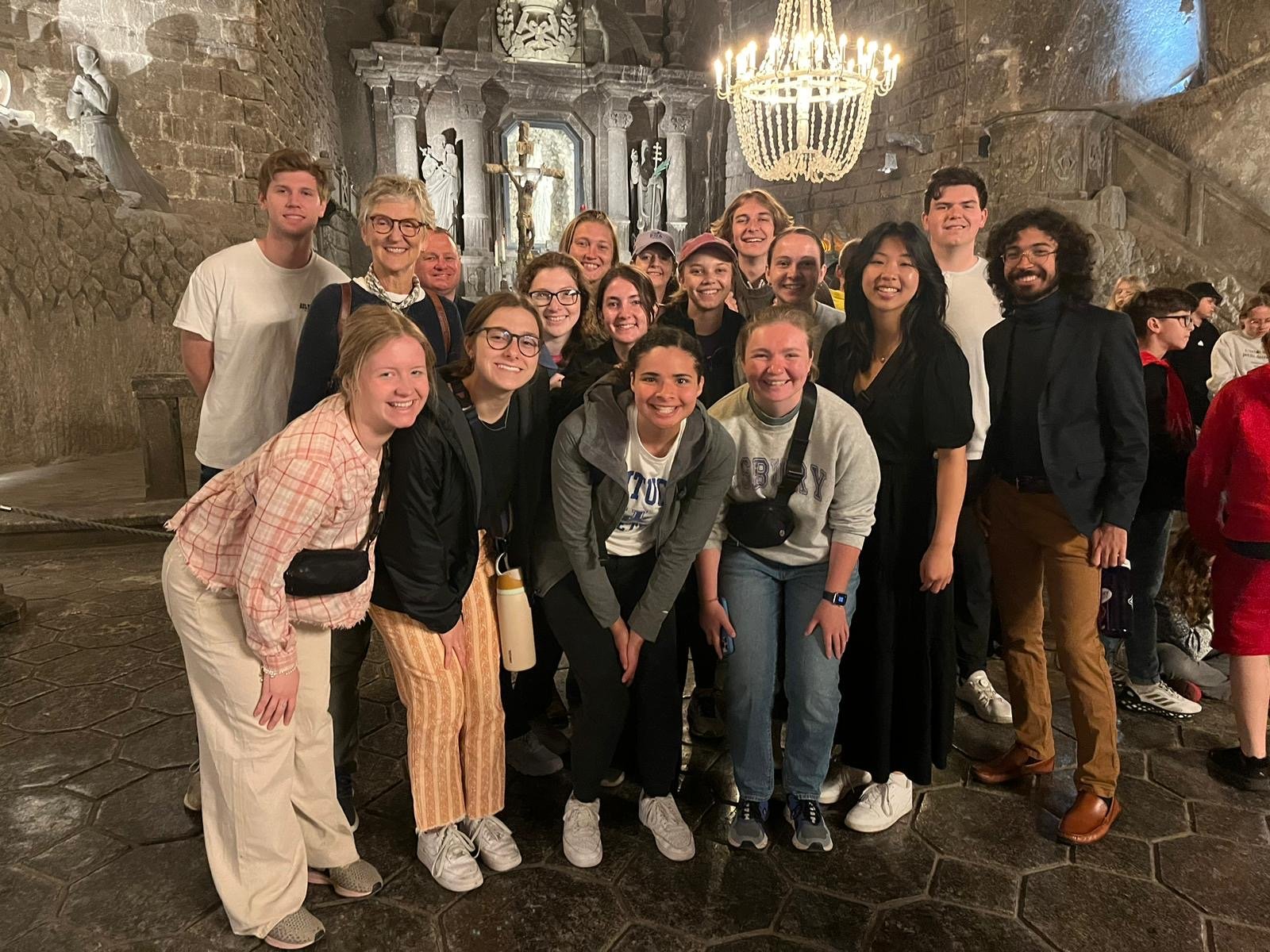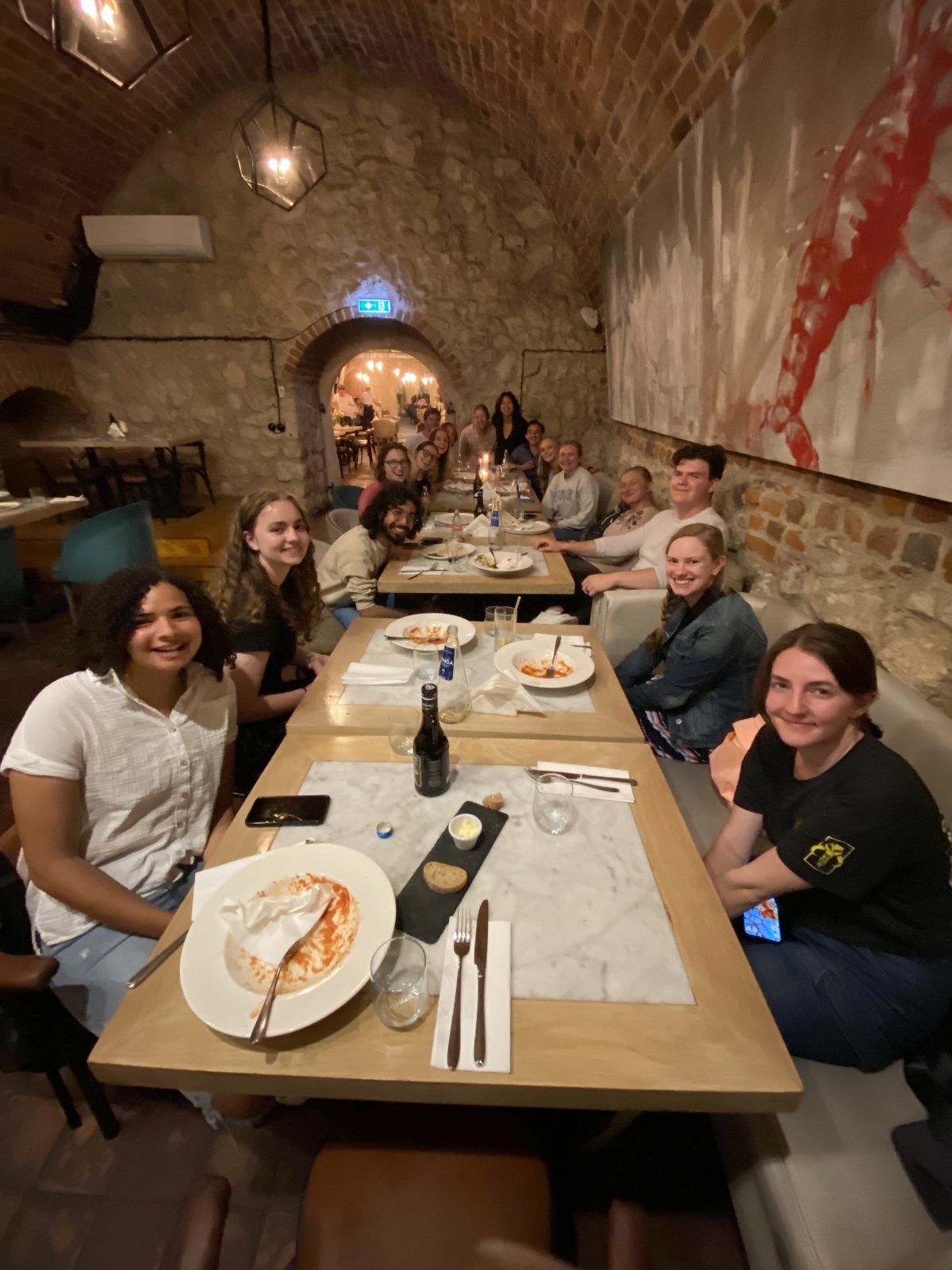Below is a summary of this year’s Holocaust Studies Tour, 2024
The tour this year was, as each one promises to be, a sundry blend of the predictable and repeatable commingled with the new, the unanticipated, and the potently particular. This is the complex base-fabric out of which study abroad experiences are cut. With regard to the new and particular, I was so pleased this time around to be able to meet Dr. Daniel Rottke and Historian Fabian Schwanzar at a place called Alt Rehse, a retreat and resort built by the National Socialists on the western banks of the Tollensesee, a lake in northeast Germany, for the indoctrination and commissioning of those selected from the medical profession to be christened as administrative leaders of the new moral structure that was to govern medicine in the Third Reich (think the full exploitation of modern medical technology and knowledge combined with the pagan ethics of Sparta). Daniel and Fabian kindly walked us through the grounds of the former Nazi resort and helped us to process both what happened there in the 1930’s and 40’s as well as the current difficulties that surround the efforts to memorialize this place. I also mention this excursion because, in an parabolic sort of way, we found ourselves on our way home to be at first burdened, only to then later be blessed, by a self-described homeless man needing to bum a ride off our group ticket back to Berlin. I’ll leave the story at that for the sake of time, but please ask one of the students who went that day for the full scoop. Suffice it to say, my stereotypes were challenged and our group was helped in a time of need. (More than once, a reference was made to Clarence from It’s a Wonderful Life.)
Julie Ruben, in her book, “The Making of the Modern University,” highlights both what has been gained as well as what has been lost since the tectonic shifts of the nineteenth century that took place in the world of education. One feature that was jettisoned to make room for content specialists and a more narrow and pragmatic approach to education was the idea that living and learning were seen as inextricably connected and occurring coextensively. Not simply in the same physical place, like a campus, but more notably within the same person. For most of recorded history, those who were learning were also “doing life” with those who were instructing. (Think of the Biblical concept of a “rabbi.”) Nowadays, professors are trained in very particular topics that sit within sub-disciplines that are themselves within disciplines. (My area of training specificity would be “the self,” within the sub-discipline of social psychology, within the discipline of psychology, within the behavioral and social sciences!) Other colaborers in the modern academy are also trained narrowly in, say, an aspect of student life or spiritual life, in institutional advancement or business administration, and so on. Today’s university has compartmentalized the higher-education process into a vast set of specializations – yes, reaping all the benefits that come from this division of labor, but leaving open the question as to what may have been the lost in the transition.
A study abroad experience pushes back the clock, in a way, and brings a sense of wholeness back into the learning process. These experiences also temporarily remove some of the social distance between professors and their students. It can be awkward for a student at first, seeing your professor walking about freely, on the street and unconstrained by the classroom or laboratory. They might wonder for the first time, “what do they like to eat?” (Do they even eat?) But with this awkwardness comes an entirely new way to learn; in fact, I might argue a more complete way of learning is experienced. For instance, on this tour I had students asking me how I came to know what I know about the holocaust – was it just by reading books? This is not the type of question that is typically asked within a classroom setting. Rather, meta-questions like these emerge as one watches a professor interact in real time with real places, real people, and real situations. Students also saw me learning – often from others, other times from newly discovered exhibits, and sometimes from the students themselves. This normalizes, humanizes, and accessibilizes the learning process; an empowering realization for a student to gain. Finally, I will note the thrill that comes from self-discovery. This, of course, does not require a study abroad experience, but the likelihood of students making discoveries and connections on their own as a result of directly interacting with artifacts and exhibits in a historically important space specifically curated for their engagement simply cannot be equaled by indirect methods; there is just so much to take in and so much to react to. I believe the effect of self-discovery on a student can be both intoxicating and addictive; it’s a drug I’m happy to push. Perhaps I treasure most our times of group discussion after we have exited a space or completed an experience and the fruits of self-discovery are given center stage as we reflect together.
The group this year was well prepared to reap all these benefits and more from our time together. Like previous groups, they were a verdant mix of academic majors, years of university study, and degrees of familiarity with the Holocaust as subject matter. They were also attentive, responsible, and wonderfully sensitive to one another. Quite simply, a fantastic group to lead – and one I am already missing.
Now, I will look forward to reading their reflection papers (which, don’t forget, students, are due June 7th! 😊).
Below are many of the large group pics taken over our two weeks together.
[If you would like to financial support Asbury’s Holocaust Studies Tour, please contact Dr. Mark Troyer in Asbury Advancement at: [email protected]. All donations will be used to offset the costs for interested students in the future.]
